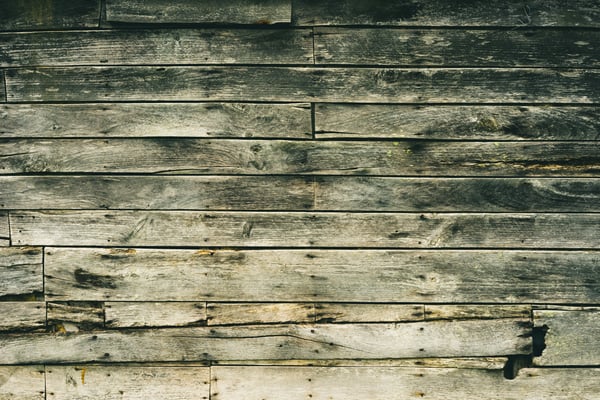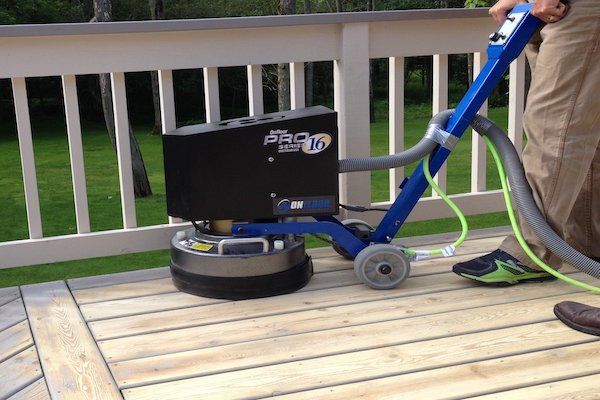If your home or your client's home has wooden decks, then chances are you're going to need to do maintenance on it after a while. This can get expensive, and it turns into a headache if it gets done wrong.
Wooden decks replacement takes a lot of work and material, so some people opt for restoration. But how do you decide between the two? Which is the best choice for your wooden deck right now?
Read on to learn when replacing vs. restoring wooden decks is the right thing to do for your home.
The Cost of Replacing Vs. Restoring Wooden Decks
The first thing you're probably going to consider when your wooden deck needs repairing is the cost. There are times when repairing your deck is going to cost just as much as replacing it. Furthermore, it's important to realize that you might not actually get a choice in this matter, depending on the extent of the damage.
The extent of the damage is the first thing to consider when setting a budget. The deck will eventually get rain, sun, and snow damage that accumulates over time. The more damage the deck has, the more it will cost to repair.
Sometimes, even if you repair the damage, a deck still might not be safe for people to spend time on. That's why it's so important to get an inspection done before you do any repairs on your own. It's also why you won't necessarily have the option to repair a deck.
Usually, this is the case when there's something wrong with the framing. These are the bones of the deck. As long as they're still in good shape, then the rest of your deck can be replaced.
In general, the cost of repairing a deck is going to be anywhere between seven hundred dollars and twenty-five hundred dollars. The average cost is currently around fifteen hundred depending on where you live and what kind of damage you have. The cost of replacing a deck completely can range from four to ten thousand dollars.
Safety
Chances are, the reason you or your client is thinking of restoring or replacing a wooden deck is a safety concern. If someone is at your home and gets injured on your deck, there could be major problems if your deck isn't in good shape.
That's why inspectors look for the following when checking your deck.

Rotten Wood
Rotten wood is the result of the wood being oversaturated by water. This is usually the result of years of rain hitting the deck directly. It causes the wood to become softer and weaker.
You can usually tell that wood is rotting if it's soft to the touch. It might crumble in your hands when you go to touch it. You might also notice nails starting to fall out, which will slide right back in if you touch them.
The biggest problem with this is that eventually, the wood will become so soft that your foot might go right through the board. This can lead to serious injuries. Rot is like a disease that will spread throughout the boards of your decks until it reaches the wood of your home.
Rotten wood is also an ideal breeding ground for termites and mold. If you have wooden decks attached to your home, then it's only a matter of time before these reach your house. This is when they will start causing real damage to your home.
The only way to fix it is to remove rotten wood and replace it with good wooden boards before spreading further. That's why restoring wooden decks regularly is so important. It helps protect your home from the same kind of damage.

Holes
Holes and rusting screws or nails around your deck are not a good sign either. This could mean that the structural integrity of your deck is at risk. You should be checking for this around the joists and beams of your deck.
You should also be checking around your deck's ledger. This is where the deck was attached to your house. It should be screwed on, not nailed, and it should have no holes or rust whatsoever.
Holes in the beams of your deck mean that your deck won't support as much weight. This can be dangerous if you intend to use your deck for entertaining guests. Decks have to hold a lot of weight from furniture and people constantly, so anything that threatens this is going to be a big issue.
For the ledger, this means that the whole deck could separate from your house. This leaves your deck and your house both exposed to damage caused by the screws in the ledger.
This is why you don't want carpenter bees feeding on your deck, either. These insects may not sting, but if they're left to their own devices, they can cause a lot of damage to wooden decks.
Fortunately, these issues can often be dealt with without replacing the entire deck. You can usually just reinforce the beams that seem to have problems. But of course, you should probably deal with any issues with carpenter bees or termites first.
Cracking
These won't necessarily cause a structural issue right away. In some cases, they might not be a structural problem ever. However, they can look quite ugly and might lead to other problems with your deck later.
That's why it's best to replace cracked boards when you see them. The good news is that you don't necessarily have to replace all of the boards when you have this problem. Oftentimes, you can usually just replace the one that's cracked.
This is going to make this one of the cheapest restoring projects that your decks might need. The only issue that you might have is finding matching wood for the replacement.
If your deck is old, then you might not be able to find the exact color and material used to create your deck anymore. You can always restain it, but that might not completely fix the issue. If this doesn't bother you too much, then you're good to go once you've replaced the cracked boards.
For decks that are a little newer, you might have a bit more luck. You can usually find something that looks close enough if this is the case. Once again, though, you might find yourself needing to look at restaining your decks to make everything look the same.
Even if you end up restoring the boards across the entire deck, this will still come out to be cheaper than replacing the whole deck. There's no point in replacing a deck that has nothing wrong with it structurally.
Loose Parts
For second-story decks, you want to be aware of deck railings and stairs as well. These are going to have more chances of coming loose and falling over time. This is why you should never lean on your deck railing.
As time goes on, the wood supporting the railing might start to rot. You should be checking for any signs of this regularly. The last thing you want is for someone to fall over the side of your deck because the railing was rotten.
This goes for the stairs as well. Rotten steps can mean someone's foot will fall right through them when they try to use the stairs. These stairs should also have railings that can break and fall off.
If too much weight is put on them, then this will also cause them to come loose and fall off. This poses a safety hazard for the next person who decides to lean against that railing.
For this reason, you'll probably find yourself replacing railings and stairs more often than the rest of the deck. This isn't a cause for alarm. These pieces tend to not be as stable.
However, if they aren't maintained, then this becomes very dangerous for anyone who sets foot on a deck. So, you should always check for loose railings and steps. You should also be checking for cracked steps. While cracks aren't necessarily a structural issue for the rest of the deck, steps are smaller and can break easier.

When Restoration is the Best Option
After the deck has been inspected and no structural issues or rotting wood had been found, restoring a deck is the easiest and most cost-effective solution.
Onlfoor makes it simple to restore wooden decks with fast and easy quick-change tools that will remove old stain and smooth out rough spots, providing you with a nice, clean surface to bring new life to old wood.

0 comments